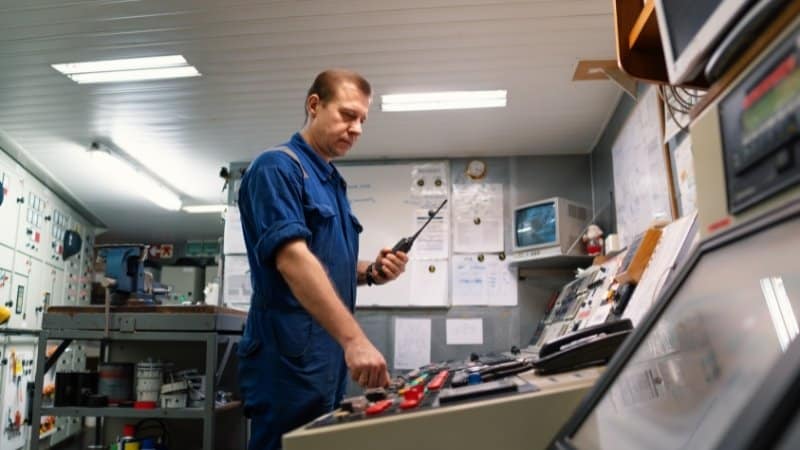From the early years of the last century, ships started fitting radio for communicating distress signals among themselves and with the shore. Radio telegraph using Morse code was used in the early on share of the twentieth century for marine communication .
In the seventies, after considering the studies of the International Telecommunication Union, IMO brought about a system where ship-to-ship or ship-to-shore communication was put into action with some degree of automation, wherein a skilled radio receiver policeman keeping 24×7 watch was not required .

Marine communication between ships or with the prop up was carried with the help of on board systems through shore stations and flush satellites. While ship-to-ship communication was brought about by VHF radio, Digital Selective Calling ( DSC ) came up with digitally remote dominance commands to transmit or receive distress alert, pressing or safety calls, or act precedence messages. DSC controllers can now be integrated with the VHF radio as per SOLAS ( Safety Of Life at Sea ) convention .
Satellite services, as opposed to planetary communication systems, need the help of geo-stationary satellites for transmitting and receiving signals, where the range of shore stations can not reach. These marine communication services are provided by INMARSAT ( a commercial caller ) and COSPAS – SARSAT ( a multi-national government funded agency ) .
While INMARSAT gives the setting of two way communications, the Corpas Sarsat has a system that is limited to reception of signals from emergency side and places with no facilities of two way marine communications, indicating radio beacons ( EPIRB ) .
For international functional requirements, the Global Maritime Distress Safety System ( GMDSS ) has divided the populace in four submarine areas. These are four geographic divisions named as A1, A2, A3 and A4 .
different radio communication systems are required by the vessel to be carried on display panel ships, depending on the area of operation of that particular vessel.
Read more: Should You Buy CTRM Stock?
A1 – It ’ mho about 20- 30 nautical miles from the coast, which is under coverage of at least one VHF coast radio receiver post in which continuous DSC alarm is available. Equipment used: A VHF, a DSC and a NAVTEX receiver ( a navigational telex for receiving nautical and meteorologic information ) .
A2 – This area notionally should cover 400 nautical miles off land but in practice it extends up to 100 nautical miles off prop up but this should exclude A1 areas. Equipment used: A DSC, and radio telephone ( MF radio crop ) plus the equipment required for A1 areas .
A3 – This is the area excluding the A1 & A2 areas. But the coverage is within 70 degrees north and 70 academic degree south latitude and is within INMARSAT geostationary satellite range, where continuous alert is available. Equipment used: A high frequency radio and/ or INMARSAT, a system of receiving MSI ( Maritime Safety Information ) plus the other remaining systems for A1 and A2 areas .
A4 – These are the areas outside ocean areas of A1, A2 and A3. These are basically the Polar Regions North and South of 70 degree of latitude. Equipment used: HF radio service plus those required for other areas .
All oceans are covered by HF marine communication services for which the IMO requires to have two seashore stations per ocean area. nowadays about all ships are fitted with satellite terminal for Ship Security Alerts System ( SSAS ) and for long compass identification and chase as per SOLAS requirements.
Read more: What is the Maritime Industry?
On distress, Search and Rescue operations from Maritime Rescue Co-ordination centers are carried out among other methods, with the help of most of these marine navigation tools. naturally, the sea has become a bunch safe with these gadgets and other crucial seafaring tools recommended by the IMO and equally enshrined in GMDSS .
More Important Articles on Maritime Communication and Navigation
